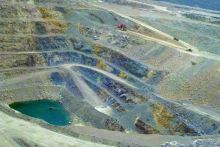On Monday November 14, the National Academies' Committee on Earth Resources held a meeting on Mineral and Energy Resource Issues for the Coming Decade. The meeting covered a wide range of issues and focused on the scientific and technical advances and challenges that will affect mineral and energy resources in the near future. Click "Read More" for some key takeaways:
- Current projects in mineral and energy resources at the National Academies include:
- A study of occupational exposure to coal mine dust in underground mines
- A focused investigation into the ways in which surface coal mining in Central Appalachia may affect human health in surrounding communities
- A comprehensive assessment of how methane emissions are measured and monitored in the United States (including non-energy sources such as agriculture and waste)
- A large-scale study of methods used to remove carbon dioxide from the Earth's atmosphere
- The Roundtable on Unconventional Hydrocarbons. A report from their first workshop (on beneficial reuse of produced and flowback waters) will be released in the coming weeks. The next workshop on this topic will be held at the National Academies on December 1-2, 2016; the topic will be Legacy Issues, Induced Seismicity, and Innovations in Managing Risk.
- Advances in mining technologies will lead to substantially reduced health risks and significant changes in mine operations in the near future. Some key developments include personal dust monitors, remotely operated machines, and improved real-time monitoring of mine conditions.
- Improvements in our ability to analyze and model the Earth's subsurface will be critically important for a wide variety of energy- and mineral-related issues, including identifying new resources, monitoring underground conditions during resource extraction, and predicting areas at risk of induced seismicity.
- Mineral exploration and recovery are responsible for 14% of the United States' gross domestic product (GDP), or $2.5 trillion annually
- Computational advances allow for the building and sharing of huge datasets with many potential uses, but concerns over data confidentiality (in the private sector) and research funding (in all sectors) hinder this kind of development.
- Other frontier topics in mineral and energy resources include: the extraction of minerals from geothermal brines and produced waters; trade and exploration in an increasingly ice-free Arctic; the development of an advanced screening tool to provide early warning of potential bottlenecks in production and/or trade of critical minerals; mining of waste streams for high-value mineral resources; and the mining of methane hydrates on the seafloor.

